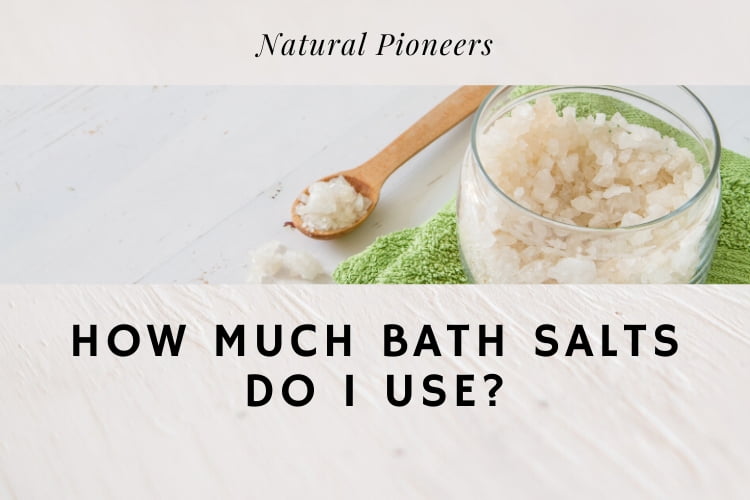
We hear this question frequently. How much bath salts should I use and what are the best salts for my skin type? This article will answer all your questions.
For a standard-size bathtub, use 1 cup of sea salt or Himalayan salt. When using Dead Sea salt, only ½ a cup is required. For skin soothing emollients, use 1 cup of colloidal oatmeal or ½ a cup of rice starch. Add bath salts under the running tap and mix with your hand until completely dissolved.
Let’s take a look at each skin type to determine what bath salt to use and in what amount.
1. Dry Skin
1. What To Use: For dry skin, colloidal oatmeal, sea salt and Dead Sea salts are best.
Studies show that colloidal oatmeal helps with dry skin and irritated skin. [1], [2], [3], [4]
Colloidal oatmeal not only forms a protective film on the skin but also comes with moisture-retention properties. [5] The anti-inflammatory and antioxidant activities of colloidal oatmeal may be the reason for its effectiveness. [6]
According to studies, sea salt shows a beneficial healing effect on skin when used as a bath additive. [7], [8] Sea salt is ideal when you have no other bath salt (like Dead Sea salts) at hand.
Consisting of about 60% magnesium and potassium, Dead Sea salts are ideal for people whose skin needs extra care. The benefits of Dead Sea salts have been proven in hundreds of studies. [9]; [10]; [11]; [12]; [13]; [14]
2. How Much To Use:
- Colloidal Oatmeal: 1 cup per standard-size bath tub
- Sea Salts: 1 cup per standard-size bath tub
- Dead Sea Salts: ½ cup per standard-size bath tub
Note: In case you’re wondering, swimming in the salty ocean won’t heal your skin. In fact, salty ocean water alters the skin microbiome and may increase the likelihood of infection, according to studies. [15], [16], [17], [18]
Learn more about baths that help with dry skin: Best Bath Salt For Dry Skin
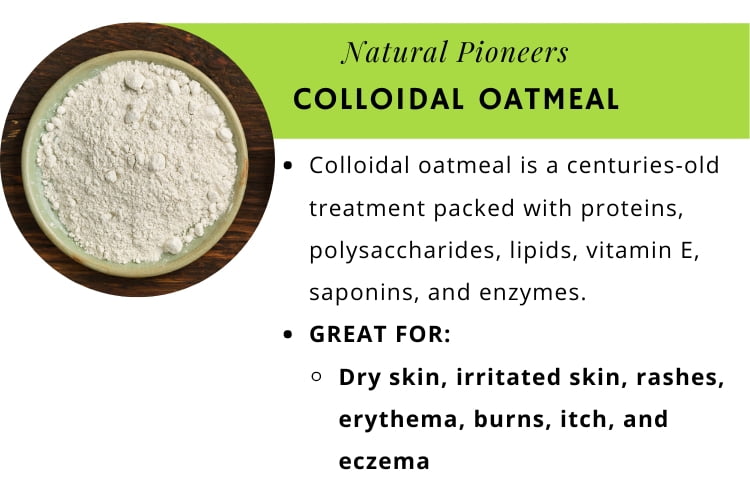
2. Aging Skin
1. What To Use: For aging skin, Dead Sea salts are best.
Studies show that bathing in a Dead Sea salts solution significantly improves skin barrier function and skin hydration. [19] Dead Sea salts show high concentrations of sulfates and mineral salts, and are proven to help decrease aging effects. [20]; [21]; [22]
2. How Much To Use:
- Dead Sea Salts: ½ cup per standard-size bath tub
Note: Make sure you use 100% Dead Sea salts with no added ingredients to achieve the same effects as seen in studies.
Learn more about proven and natural bath additives here: Quick And Easy Guide To Bath Salts
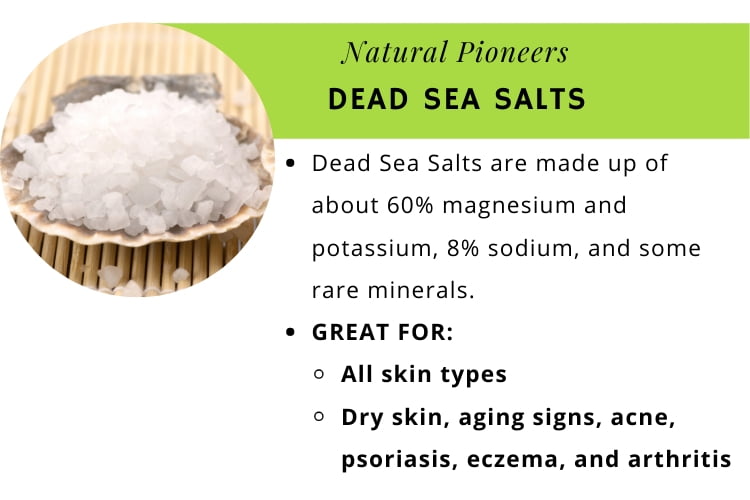
3. Skin Disorders: Eczema And Psoriasis
1. What To Use: For eczema and psoriasis, colloidal oatmeal and Dead Sea salts are best.
Colloidal oatmeal has been shown beneficial in the treatment of atopic dermatitis and resulted in significantly improved symptoms and severity of eczema [23]; [24] According to the US Food and Drug Administration (FDA), colloidal oatmeal has a soothing effect that alleviates itching and irritation in eczema. In psoriasis, Dead Sea salts are your go-to. Studies have repeatedly shown that Dead Sea baths help with psoriasis. [25]
2. How Much To Use:
- Colloidal Oatmeal: 1 cup per standard-size bath tub
- Dead Sea Salts: ½ cup per standard-size bath tub
Note: Studies indicate that colloidal oatmeal cleanser and cream provide additional benefits for eczema. [26], [27]
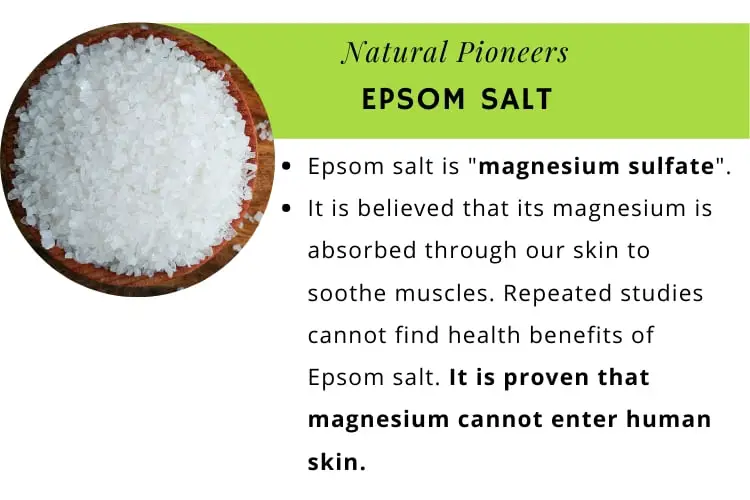
4. SLS Damaged Skin
1. What To Use: For SLS damaged skin, rice starch is best. Rice starch is ideal for anyone suffering from SLS (sodium lauryl sulfate) damaged skin. SLS is a common ingredient in beauty products, body washes, cleaning products, and even toothpaste. Studies show, that 15 min baths twice a day in bath water with added rice starch led to a 20% improvement on the healing capacity of damaged skin. [28]
2. How Much To Use:
- Rice Starch: ½ cup per standard-size bath tub
Note: Make sure you choose 100% rice starch with no added ingredients to achieve similar results as seen in studies. Always avoid added ingredients that could potentially harm your skin.
Learn more about natural bath additives here: What Is A Good Natural Bath Salt
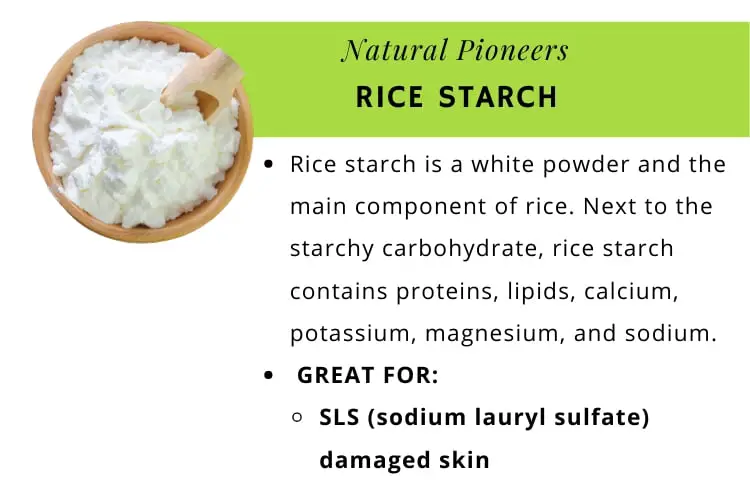
5. Normal Skin
1. What To Use: For normal skin, sea salt, Himalayan salt, and Dead Sea salt are best.
Sea salt shows a healing effect when used as a bath additive. [29], [30] Sea salt is ideal when you have no other bath salt (like Dead Sea salts) at hand. Himalayan salt’s mineral composition is very similar to that of sea salt. Both, sea salt and Himalayan salt consist of mostly sodium, about 98%. While there are no studies on Himalayan salt itself, its similarities to sea salt give reason to use it in the same manner and expect equal outcomes.
Dead Sea salts consist of about 60% magnesium and potassium whereas sea salt and Himalayan salt are 98% sodium. Dead Sea salts show benefits for all kinds of skins and are our favorite staple for normal skin. [31]; [32]; [33]; [34]; [35]; [36]
2. How Much To Use:
- Sea Salt: 1 cup per standard-size bath tub
- Himalayan Salt: 1 cup per standard-size bath tub
- Dead Sea Salts: ½ cup per standard-size bath tub
Note: Sea salt and Himalayan salt show higher amounts of beneficial minerals than highly-refined table salt. Make sure you choose a natural bath salt and avoid table salt with added anti caking agents and iodine.
Learn more about Dead Sea salts and sea salt here: Dead Sea Salts Vs. Sea Salt | Are They The Same?
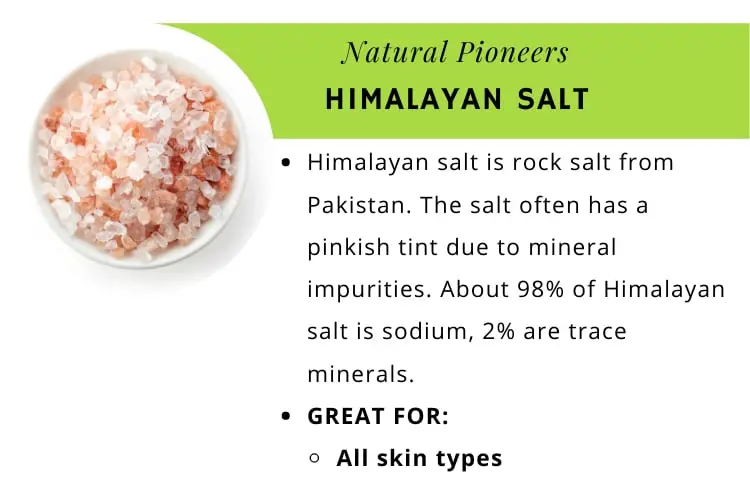
6. Redness & Inflamed Skin
1. What To Use: For redness & inflamed skin, colloidal oatmeal and Dead Sea salts are best.
Studies show that bathing in a Dead Sea salts solution significantly improved skin barrier function. Inflammation, shown as skin roughness and redness, were significantly reduced after bathing in the Dead Sea salts solution. [37] In addition, colloidal oatmeal can help soothe inflamed skin. The anti-inflammatory and antioxidant activities of colloidal oatmeal may be the reason for its effectiveness. [38]
2. How Much To Use:
- Colloidal Oatmeal: 1 cup per standard-size bath tub
- Dead Sea Salts: ½ cup per standard-size bath tub
Note: Make sure you use 100% Dead Sea salts. When using colloidal oatmeal, you should know that studies indicate that colloidal oatmeal cleanser and cream provide additional benefits for inflamed skin. [39], [40]
Learn to make your own colloidal oatmeal here: How To Make Colloidal Oatmeal
7. Acne
1. What To Use: For acne, Dead Sea salts and Dead Sea mud are best.
Dead Sea mud has pronounced antimicrobial action. That means it effectively stops the spread of fungi and bacteria which explains its anti-acne effect. [41] Moreover, Dead Sea mud makes wounds heal faster, stimulates blood circulation, cleanses dead skin cells and soothes irritation. [42]; [43]; [44]
Why not make a Dead Sea mask while soaking in a Dead Sea bath? In addition to what mud does to your skin, Dead Sea salt baths restore moisture and enhance skin hydration. Dead Sea minerals contain a natural moisturizing factor that can improve the look of acne damaged skin. [45]
2. How Much To Use:
- Dead Sea Salts: ½ cup per standard-size bath tub
- Dead Sea Mud: Apply a thin layer on skin, allow to dry & rinse well!
Note: When dealing with acne, make sure to clean up your diet as much as possible and get educated about gluten, dairy, and sugars.
Learn more about Dead Sea mud and acne: Is Dead Sea Mud Good For Acne?
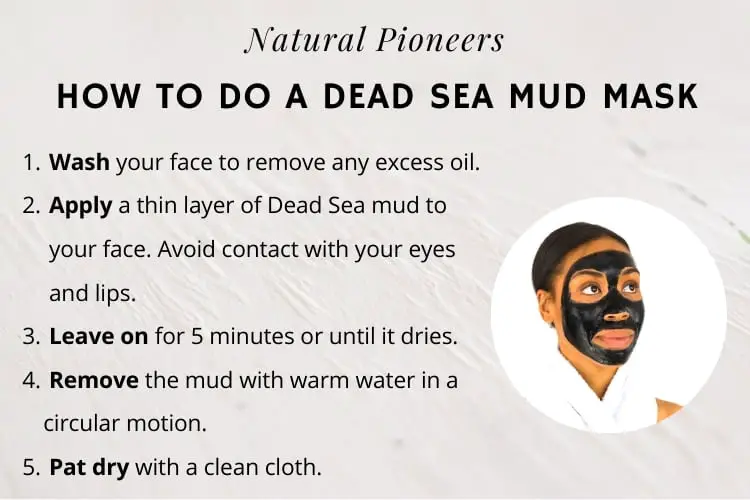
8. Sensitive Skin
1. What To Use: For sensitive skin, Dead Sea salts are best.
Sensitive skin is more prone to skin reactions and it’s especially important to use natural and clean bath additives. 100% Dead Sea salts are safe: The laboratory analysis of Dead Sea minerals did not reveal mineral concentrations that could represent a health concern for their intended use. [46]; [47]; [48] Studies show that bathing in a Dead Sea salts solution significantly improves skin barrier function and reduces skin roughness and redness. [49]
2. How Much To Use:
- Dead Sea Salts: ½ cup per standard-size bathtub
Note: Make sure you use 100% Dead Sea salts with no added ingredients to achieve the same effects as seen in studies.
Learn more about the best natural bath additives: Quick And Easy Guide To Bath Salts
9. Oily Skin
1. What To Use: For oily skin, plain hot baths and Dead Sea salt are best.
Remember that bath salts don’t ultimately target your face but primarily your body’s skin. If you find your skin to be oily, try a plain hot bath without anything added. Simple hot baths come with a number of benefits, read more here: What Is A Good Natural Bath Salt. If you feel like your skin could use a little extra care, use Dead Sea salts, they work wonders for all kinds of skins and conditions.
2. How Much To Use:
- Dead Sea Salts: ½ cup per standard-size bathtub
Note: Make sure you use 100% Dead Sea salts without added ingredients. Try a couple of drops of essential lavender oil, if you fancy some aromas.
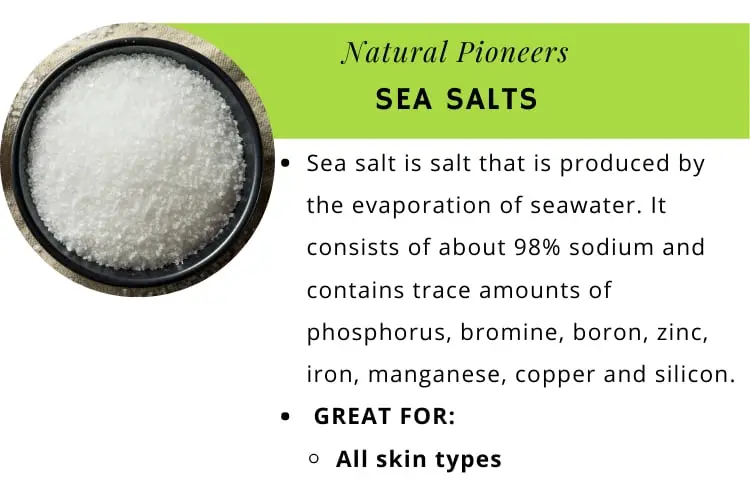
10. Combination Skin
1. What To Use: For combination skin, Sea salt and Dead Sea Salts are best.
When you find your skin to be oily, opt for a sea salt bath. Sea salt shows mild healing effects. [50] Be aware, that hot water can easily dry out skin. So, use it to your advantage when you find your skin on the oily side. If your skin needs a little care and hydration, soak in some Dead Sea salts. It reduces inflammation, roughness and redness and will enhance your skin hydration. [51], [52]
2. How Much To Use:
- Sea Salt: 1 cup per standard-size bathtub
- Dead Sea Salt: ½ cup per standard-size bathtub
Note: Make sure you use quality sea and Dead Sea salts without added ingredients.
Learn more about natural bath salts in our Quick And Easy Guide To Bath Salts

